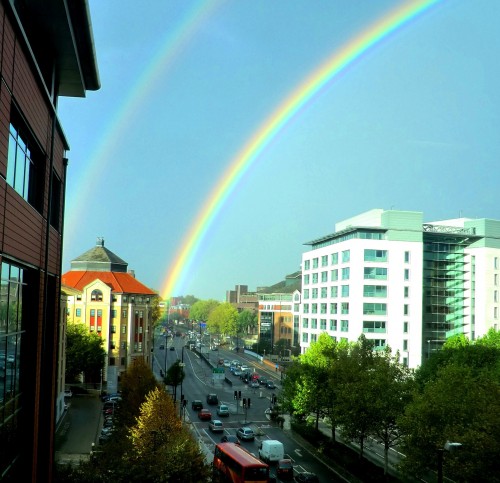
How do you explain the science behind a rainbow to a child?
By Tushna Commissariat
It never rains but it pours, they say, and 1964 experienced quite a downpour of amazing “physics firsts” as the first papers about quarks, the Higgs mechanism and the EPR paradox or Bell’s inequality were all published. Also, Arno Penzias and Robert Woodrow Wilson made their first measurement of the cosmic microwave background on 20 May 1964, detecting the whisper of the Big Bang. To celebrate 50 years since these world-changing discoveries were made, the Harvard-Smithsonian Centre for Astrophysics has produced a webcast (you can watch the video on their YouTube page in a week’s time) featuring leading cosmologists Alan Guth, Robert Woodrow Wilson, Robert Kirshner and Avi Loeb. You can read more about it in this fascinating article by David Kaiser on the Huffington Post website, as he take a deeper look at the eventful year of 1964.
Have you ever had a young child ask you what seems like a simple question – “Why is the sky blue?”, “What is a rainbow?” – only to find yourself completely lost while trying to give them a simple, uncomplicated answer that they actually comprehend? If so, then you might turn to the handy answers provided by people each year who participate in Alan Alda’s “Flame Challenge” – where he challenges scientists to satisfactorily explain a complicated scientific idea to a panel made up of 11-year-old judges. This year’s question is “What is colour?”. Take a look at this article on the Slate website to discover questions from previous years while you start working on your entry for this year.
In today’s technologically fast-paced world, it’s always good to know which companies and businesses are at the top of the innovations pile. The MIT Technology Review has made this its business – its motto states that it “identifies important new technologies – deciphering their practical impact and revealing how they will change our lives”. It has just published its list of the “50 Smartest Companies” – take a look at the nice interactive list and find out what exactly makes a smart company in today’s climes.
For some light weekend reading, take a look at Freeman Dyson’s rather long (eight pages!) review in New York Review of Books of Brilliant Blunders: From Darwin to Einstein, Colossal Mistakes by Great Scientists That Changed Our Understanding of Life and the Universe by Mario Livio; and then make sure to read our more succinct review too. And take a look at this essay series on the Slate website that talks about astronomy’s most intriguing puzzles today.
very like